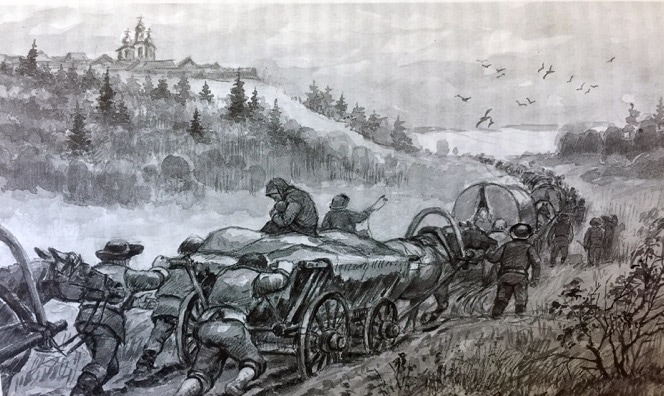The majority (about 95 percent) of those who settled in the colonies established by Catherine the Great along the Volga River were ethnic Germans from the war-ravaged German states where religious strife and economic hardship had created a climate ripe for immigration. A number of these ethnic German immigrants had first migrated to Denmark in the early 1760s, but after only a few years determined that they no longer wanted to remain there. They too joined the migration to the Russian Volga from 1763 to 1772 and 106 colonies were established.
Catherine the Great's 1763 Manifesto attracted the attention of other European ethnic groups as well. The Germans were joined by French, Swedish, Danish, Austrian, Swiss, Hungarian, Polish, Italian, and English immigrants and were settled together among the colonies. Initially, there were enough colonists from France that a French colony (Franzosen) was established and enough Swedes for a mostly Swedish colony (Schwed).
Over time, these minority ethnic groups assimilated into the dominant German cultural of the colonies and all became known collectively as Wolgadeutsche (Volga Germans). Since the establishment of the first colony in 1764, the descendants of the original Volga Germans settlers have migrated to other parts of Russia, Asia, North and South America, Africa, and Australia as well as back to Europe.

Where Did They Settle?
We have chosen to define the Volga German geographical area as that region along the Volga River near Saratov which was settled by the aforementioned immigrants who responded to Catherine's 1763 Manifesto and were settled in the original 106 mother colonies. Those who settled at the same time in the geographically isolated colony of Riebensdorf to the west of the Volga German area are considered part of this group as well because of familial and religious connections with the colonies along the Volga and the settlement time period - but that is a single exception.
There are two groups of ethnic Germans who settled among the extant Volga German colonies in later years. These groups include the Mennonites who arrived the late 1840s and 1850s and the ethnic Germans who settled further north near Samara in the 1850s in what are typically called the Samara Colonies. These groups are not included in the Center's definition of "Volga German" as they migrated from different parts of Germany at different times and under different legal conditions from the colonists who arrived in the 1760s.
>> Learn More About the History of German Ethnic groups in Russia
>> Read the article "Where did my ancestors live before migrating to Russia?"
The boundaries of the Volga German area are not limited to those of the Autonomous Volga German Republic which existed only from 1924-1941.
Beratz, Gottieb. The German colonies on the Lower Volga, their origin and early development: a memorial for the 150th anniversary of the arrival of the first German settlers on the Volga, 29 June 1764. Translated by Adam Giesinger. Lincoln, NE: American Historical Society of Germans from Russia, 1991.
Dietz, Jacob E. History of the Volga German Colonists. Lincoln, NE: American Historical Society of Germans from Russia, 2005.
Koch, Fred C. The Volga Germans: In Russia and the Americas, from 1763 to the Present. University Park, PA: Pennsylvania State University Press, 1977.
Pleve, Igor R. The German Colonies on the Volga: The Second Half of the Eighteenth Century. Translated by Richard Rye. Lincoln, NE: American Historical Society of Germans from Russia, 2001.
Pleve, Igor R. A Brief History of the Germans in Russia. 2019.